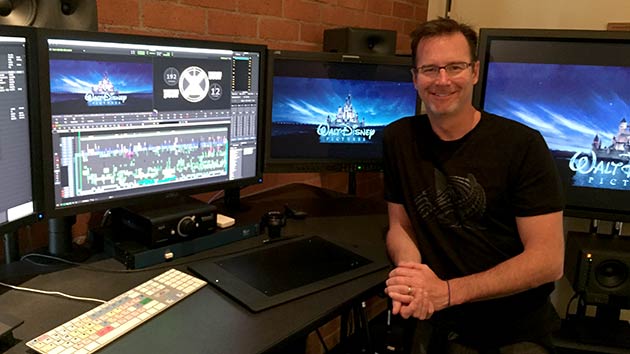Cutting a Complex Time-Travel Story, Paying Attention to Performance, and Loving the Terminator
Over the years, film editor Roger Barton has carved out a fruitful niche cutting high-octane, big-action, visual effects-loaded Hollywood extravaganzas. Indeed, his resume is chock full of Transformer pictures (three to be exact), along with Star Wars: Revenge of the Sith, Bad Boys II, Pearl Harbor, Speed Racer, and World War Z, among others. But all of that work, in a sense, owes an allegiance to Barton’s longtime love of the Terminator franchise. That’s because Barton insists that James Cameron’s original 1984 Terminator movie “was one of the reasons I got into film—it had that big of an impact on me.”
And Barton has other connections to the franchise, as well. Two of his longtime industry mentors are Mark Goldblatt, ACE, and Dody Dorn, ACE, who were both involved in editing the first two Terminator movies for Cameron—Goldblatt as editor of The Terminator in 1984 and co-editor along with Dorn and others on Terminator 2: Judgment Day in 1991.
“In fact, I called Mark Goldblatt before I started this movie, and told him I was taking it on,” Barton recalls. “He had such a huge influence on my career at so many levels, and was real happy to hear I was on the film, because we had worked together for so many years, I as his assistant. He brings such an enthusiasm to the film. I just fed off it after I talked to him, and got really excited about diving into [this project].”
Terminator Genisys's time-travel story, connection to the original movies, and resurrection of original characters, however, is ultimately a set-up for moving the franchise in a new direction. Barton says the material therefore required its own, unique cutting approach and was, to say the least, a complex challenge. In a recent conversation, he discussed those challenges and his methods for organizing reams of footage and digital elements in order to take the Terminator story “somewhere else,” as he describes it. Watch the video, below.
Crafts: Editing
Sections: Creativity
Topics: Podcast Podcasts from the Front Lines Project/Case study Avid editing media composer roger barton
Did you enjoy this article? Sign up to receive the StudioDaily Fix eletter containing the latest stories, including news, videos, interviews, reviews and more.











Leave a Reply